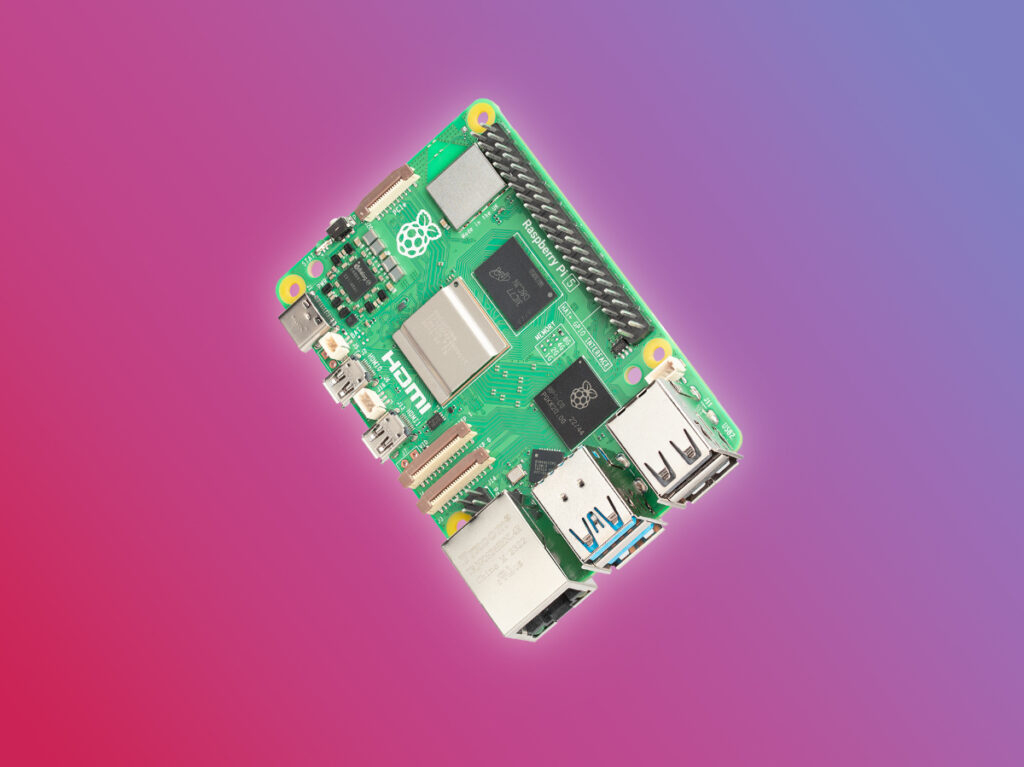Am I correct in saying this Pi5 will be the best chance at a very performant desktop PC? That seems very much where they were headed with all these designs.
For performance you probably want something like a Orange Pi 5, in most workloads its significantly faster and uses less power doing so. But is also 20$ more expensive and probably doesn’t have the community support around it.
Cool, I’ll check it out, thanks!
AFAIK that’s one of the goals of the ARM (and maybe eventually RISC-V) architecture. It’s doing well on mobile and the low consumption is needed for a future that will require less energy. Or at least, do more with less. Having ARM desktops would also merge the mobile and the desktop environments.
Apple has moved to this architecture, and software wise, Linux is very compatible too. Even Microsoft knows and is trying (clumsily) to move to ARM.
The Pi5 will indeed open new possibilities on that front.
For not a lot more you can now get NUC like machines with Celeron’s, Pentiums and get to choose NVMe SSDS and RAM amounts and even Wifi cards (so wifi 6e or 7) and 2.5 gbit/s ethernet. At these sorts of prices they are running into the low end of NUCs at $100 and they don’t compete well on a whole range of factors. They are still cheaper but its not the 30-40 of the Pi before prices went nuts and this new higher price point isn’t as clear cut.
Its not very price competitive now. Its moved into the low end N100 territory with ITX boards and while its smaller and a bit less power its no where near as performant. They will still have some use in smaller applications but 5V x 5A is a chunky cable. I am not convinced this is the way now.
My main uses for them weren’t ever desktop but tinkering with simple robotics / telepresence, automation, aprs / mapping, 3d printing (octoprint). Seems like the 5 is overkill for that. I guess there’s always the pi zero.
Haven’t read the article but is it seriously 5V 5A for the power cable? It seems absurd that they wouldn’t put a voltage regulator on board to accept a 12V 2A power supply.
The idea is they run off USB. Having said that, I’m pretty sure most of us just plug it into mains power.
Even still I wonder if they could have added USB-PD capabilities in order to use 9V or 15V to bring the current down. A 5V 5A USB supply is very unique (even the previous 5V 3A was niche) as standard USB supplies that we’re all used to typically max out at 2.5A. $12 for the official power supply is a decent price but you’re severely limited on options if you don’t have the official supply.
Looking at the power supply listing, it says that it is USB-PD. It lists output as “5A @ 5.1V, 3A @ 9V, 2.25A @ 12V, 1.8A @ 15V”.
I fully admit that I don’t understand USB-PD, though. Does the Pi have to support it too?
Yes, USB-PD requires a handshake confirming that both the charger and device are capable of using it.
I didn’t look any further than the article listing the power supply as 5V5A so its good that it supports higher voltages, but really odd that it’d push out 25W at 5V as this is very demanding on the wiring since it has internal resistance which causes the voltage to drop with increasing length. The whole purpose of USB-PD is to up the voltage while reducing current to mitigate losses (and heat and wire thickness) and supply much higher wattage without having to use chunky wiring. This has been an issue with the Pi for quite a while which is why you always hear troubleshooting responses talking about having too small of a power supply. Now they’ve upped the power requirements while still using a 5V baseline. I did see the article mention that it has a voltage regulator capable of handling 20A of current so maybe it’s just poorly worded with regards to the official power supply.
It’s pretty hefty… and there’s an official cooling solution to remove all that heat too…
They’re basically going for the low end desktop market with it I think.
“we notice everyone is having trouble getting our previous model due to scalpers, so we released a new version at double the price!”
/s
I assume this will be prohibitively expensive (I really can’t shell out any more than £60 and that’s pushing it already), and probably impossible to get my hands on.
But if it’s affordable and actually available? Hell yeah, this thing looks fantastic. I love that we’re making something awesome here in the UK and sharing it with the world.
Will we finally be able to run N64 games on this hardware, do you think?
N64 could be done before with overclocking by the looks of it, so this should handle it as a baseline.
Although nothing really gets you over the “our games are in 3D and we don’t really know what we’re doing” jank of the PS1 and N64 era.
Considering single core performance was the main thing holding it back previously. There is a good chance Nintendo 64 emulation should be better. Other Arm based SBC have been able to do it relatively easily for a while.
I loved Pi’s, but I hate the micro hdmi connectors
I’m not a fan but I’m guessing it’s form factor?
I had to buy a micro HDMI adapter. These video ports are slowly becoming like USB ports and it’s really frustrating.
The most annoying part I think is because I so rarely need them. All my Pis run headless, but the one time I do need direct console access I have to find the bloody adapters. Leaving them attached and unused is just asking them to get damaged.
Rather than using micro-hdmi (which hardly anything uses), stick a pair of usb-c DP ports instead if size is an issue. at least then I don’t need adapters that are ONLY needed for the Pi.
I want to be excited about this, but I just don’t believe I’ll actually be able to get one for retail price. For much of the RP4 lifecycle they prioritized corporate sales, and regular consumers were out of luck. I don’t have a lot of faith in them right now.
we’re going to ringfence all of the Raspberry Pi 5s we sell until at least the end of the year for single-unit sales to individuals, so you get the first bite of the cherry.
deleted by creator
We are dumping the RPI computer modules form our BOM too. The N100 is at a very low price point and readily available. Never again in my BOM.
They’re probably doing that for first batch bug fixes.
It’s gotten to the point with Windows 11 killing so many thin clients for businesses with TPM that you can typically find used ones for nearly as much as a Pi. Unless you need the size and efficiency I just struggle to find reason to buy another Pi if I need to selfhost something.
Pis are really cool but they really have become more corporate focused and it shows.
What should I look for in a thin client if I want to prioritize low power consumption?
I wonder if they can finally run on fully open source firmware.
Our newer, faster CPU is complemented by a newer, faster GPU: Broadcom’s VideoCore VII, developed here in Cambridge, with fully open source Mesa drivers from our friends at Igalia.
Idk about fully but the above is a good change imo
Open source driver is definitely a good thing.
This doesn’t say anything about the firmware itself tho.
Indeed; my bad. Hadn’t had my ☕ yet I guess lol
Broadcom is the main problem
There’s a lot of people in this discussion taking about how raspberry Pi and the pi foundation isn’t worth your money, whether on principle, or just dollars per unit of compute.
I get it, but I have a question. Is there a competing SBC that has official PoE support? I know there’s half baked ways to sort that out separate from the device, but I have a few edge cases where the last viable option was the pi 3B+. The official pi 4 case is horrendous for airflow, and third party cases usually either assume you want no protection (and all the airflow) or you want to handle thermals by contact pads passively (making it difficult or impossible to use the PoE hat), or are just as bad as the stock case for airflow, but they have enough room inside to add a hat, in which case, why go third party when the official case is equally terrible?
The pi 3 had a PoE hat, and a case you could take the top off and get decent airflow. Too bad the fans in the first gen PoE hat are unicorns in terms of power draw, with no way to adjust the power curve for the fan connector to suit a different fan, and since they’re unicorns, you can’t find them for purchase, and if you find something remarkably similar, they’re still slightly different enough that they don’t work (I’ve tried). So the fans burn out and IDK, good fucking luck I guess. Buy a new PoE hat?
Then there was the gen 2 PoE+ hat which released alongside the pi 4, which supposedly works with the 3 as well, which I haven’t tried yet, but I’m planning to.
In every case, I have done network monitoring and service nodes that aren’t exactly local to a power receptacle and they need PoE. The pi 4 eliminated itself because of the garbage case design of the official case and the lack of thought by those doing the third party cases… so I’m looking at the 5 like, finally, they got it right.
Now everyone is talking shit about the pi foundation, which I can completely understand, but for the application I need these for (and my pi 3’s have been in service for like ~5 years and probably need to be refreshed), what other option do I have? What’s decent with a good case and PoE input? PoE or PoE+ doesn’t matter, I just need to be able to package it up into a relatively small footprint for the application.
Anyone have any suggestions? I’m all ears. I’ve googled till I’m blue in the face and I can’t even find an SBC that has an option for PoE, I never got to looking into whether it has a decent case or if it will run my software…
ACAB means ACAB, come on
reminder that rpi is pro cop: https://nitter.net/molly0xFFF/status/1601037628450959360?ref_src=twsrc^tfw
Look, I’m already sold.
That’s probably the smallest problem here
OpenGL 3.1 and Vulkan 1.2 in 2023? It’s so terrible!
It’s the lack of hardware AV1 that concerns me, as well as droppong h.264. Raw CPU means it’ll still handle the latter, but since streaming will be moving to AV1 it’s kind of questionable whether this will be a reasonable media center.
It’s not “opengl 3.1” it’s “opengl es 3.1” which stand for embedded system and roughly equals to OpenGL 4.3 spec.
Oh, my bad. But OpenGL ES 3.1 and Vulkan 1.2 is also not suitable to 2023. Hope the developers can make driver support Vulkan 1.3.
They did mention that gpu has open source mesa driver support
Will it handle all features of Plex? Like streaming high def and using all plexamp features?
4k decoding still drops frames, hardware is capable but drivers are not right now
Theres much better options for that
But are there cheaper options… who am I kidding. Raspberry Pi 5 will instantly get scalped for 80+ dollars.
Edit: looks like they are already 60-80 dollars
Any suggestions that you could make? I’m in the market for replacing my plex box.
Any Intel CPU 8th gen or newer with quick sync can do like 20 simultaneous 1080p transcodes. You could get a Celeron and have a powerful plex box. Look up guides for the HP 290 as a starting place.
So, the pi is $80. That is without a case, power supply, or hard drive. Once you add these things to the Pi, you are into the $100-200 price range. At that point, you can just get an old desktop or a micro desktop. There are some youtube videos about it. I think they are maybe twice as big as a pi, but have intel processors in them.
They will be cheaper or similar in price and have better performance.
I just use an old desktop that has a 4th gen i5 and it runs significantly better than the pi4 does. Plus, I can just throw all my drives in the case and not need to worry about USB connected drives.
Also, I recommend Jellyfin over Plex.
The problem with that is the power consumption. It adds up.
I guess, it’s not going to be a huge difference when you factor in using a bunch of hard drives.
The raspberry pi has its place for sure, but those micropcs are probably a better deal for most people who want them for home use.
I use a J5040-ITX ATM. I know it says Pentium but don’t take that for granted. This chip is really just a lower binned i3 throttled enough to be passively cooled.
I run Plex as a docker-compose workload and bind mount /dev/dri which passes Intels quick sync accelerator into the container for Plex to use.
This enabled hw encoding. I also make sure I can direct stream from all of my clients. This setup can handle a few 4k streams and several 1080p streams.
I mainly use it hoard to losseless music and hard to find cartoons / movies.
I have an upgrade to a Pi Cluster planned but I don’t recommend it unless you specifically want to run Pis.
Love the PCIe interface upgrade. Hope they expand on it even more in the future.
I gotta resist the urge… I have two Pis idle 🤦♂️
I have a 4 on server hosting and 3 3s idle. If I buy the 5 I would have 4 Pis idle
i have no sympathy for hoarders
Your disregard for my future projects disgusts me
I made a nice nextcloud server on mine :)
I was also planning to do one with a new 1TB hdd or ssd attached. This might be what the 4 will become due to its CPU and memory
Yes, this is exactly what I did, with a 1TB SSD. I tried to host a Jellyfin server as well, but it didn’t have the oomph for that. A plan for my 10yo Mac Pro once I finally retire it lol
The future: when I’ll finally use this stuff.
🤝 fair enough!
They go for good prices on eBay.
But you should keep them because you could have a good use for it in a future side project… right? … right???
Definitely. Got to be something that will come up.
In a store nowhere near you. And not on the interwebs either.
Oh come now, it’s the principle of the thing.
But indeed I doubt I’ll be able to buy one for a long time.
I’m pretty glad I got myself a Pi 4 for the normal price when it was relatively fresh on the market. I’m tempted to try and get a Pi 5 to replace it and use the Pi 4 for something else at some point. I’m not sure what that might be though, and I feel like the expected scarcity is what even makes me consider it at all. I use my Pi 4 for Kodi on my trusty dumb TV and have recently put my old 3B+ to use for my 3D printer. I’m now left with no spare Pi for whatever might arise.
Might as well add some picos to scratch that itch. And the rabbit hole that micro controllers bring… next thing you know, your work desk is also a solder station, a hot air station, PCB design, circuit design, and you’ve got two extra diy printers in various state of being built/rebuilt
I don’t have a problem, you have a problem
I started out the same way and now my desk is cluttered with partially completed projects and devices in various states of taken apart. But for me the fun part is learning something new along the project journey. The microcontrollers were a game changer due to their low cost. I’m not trying to fry them, but hey if I screw up who cares it was a couple bucks anyways.
For circuits I design I’ve mostly been having them created overseas and I’ll solder on the components but I’m really curious about hacking a toaster into a refry oven or whatever their called and soldering surface mount components. Not that I need the small form factor or I’m making enough circuits to warrant trying to save on cost, I’m just curious and want to try haha. Gonna need a bigger desk…
Honestly, get the flux and a hot air station instead, imo. Then again, I prefer being able to have control over where the heat is going instead of reflowing everything at once
I have pre-ordered one for delivery in October. If you look at https://rpilocator.com/ you will find various models in stock at the official price. The Raspberry Pi clearly isn’t the tool for you
Oh it certainly is.






















